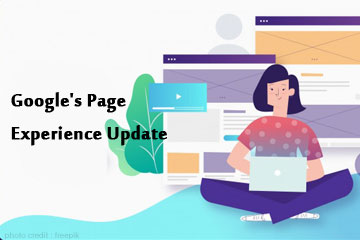
Google's algorithm update is one of the most challenging aspects of SEO. Moreover, the company rolls out updates to make the user experience subtle. Google came up with yet another update, "The Page Experience Update." This update is intended to bring a better experience by prioritizing pages that offer quality page performance. The critical areas of focus include fast load times, non-shifting, and stable pages. Google always focused on-page experience metrics- mobile-friendliness, HTTPS-security, and intrusive interstitials.
The latest update now introduces three areas to measure. It's about experiencing both speed and overall page experience. Moreover, it's termed the "Core Web Vitals."
Core Web Vitals
The Core Web Vitals cover the largest contentful paint (LCP), first input delay (FID), and cumulative layout shift (CLS). These new metrics help website owners monitor and enhance their websites' loading speed, responsiveness, and stability. The overall aim here is to improve the user experience (UX).
Largest Contentful Paint (LCP)
LCP aims to measure how a user perceives the initial load of a page. Its focus is on the visual part of the load time. It basically measures the time it takes for the largest block of visual content to load on the page.
First Input Delay (FID)
The First Input Delay measures how fast it takes for a page to be responsive. If you click web pages and it takes time, it means it offers a slower FID.
Cumulative Layout Shift (CLS)
CLS helps measure page stability. The cumulative shift is the overall shift in a page's layout as it loads.
Does Google's Update Impact SEO
There's an incentive to optimize the website for a good Core Web Vitals score because they will become a lightweight ranking factor. A good user experience enhances the bounce rates, conversion rates and leads to revenue across all marketing channels. A user needs to decide whether or not they want to stay on the website within 10-15 seconds of arriving. If the site performance isn't up-to-speed, users will be more likely to navigate elsewhere.
Improving page experience should be about developing the overall quality of the web page. You don't need to abandon quality content creation efforts or other UX practices in the process of optimizing for the update. Google emphasizes the importance of Page Experience that sites need to improve.
Improve Core Web Vitals Score
Improving your Core Web Vitals requires technical understanding. If you're not a developer, it's best to consider assigning responsibility for these scores to a developer. You need to understand the problem specific to the site. The site may be scoring on the Cumulative Layout Shift font but requires a lot of improvement on the First Input Delay and LargetsContentful Paint.
Besides, it's best to run a quick site audit through the Page Speed Insights or Lighthouse to see where it stands on all three aspects.
Conclusion
We highly recommend fixing each of the areas when it comes to competing online. Staying updated helps your site rank at the top position in the long run.